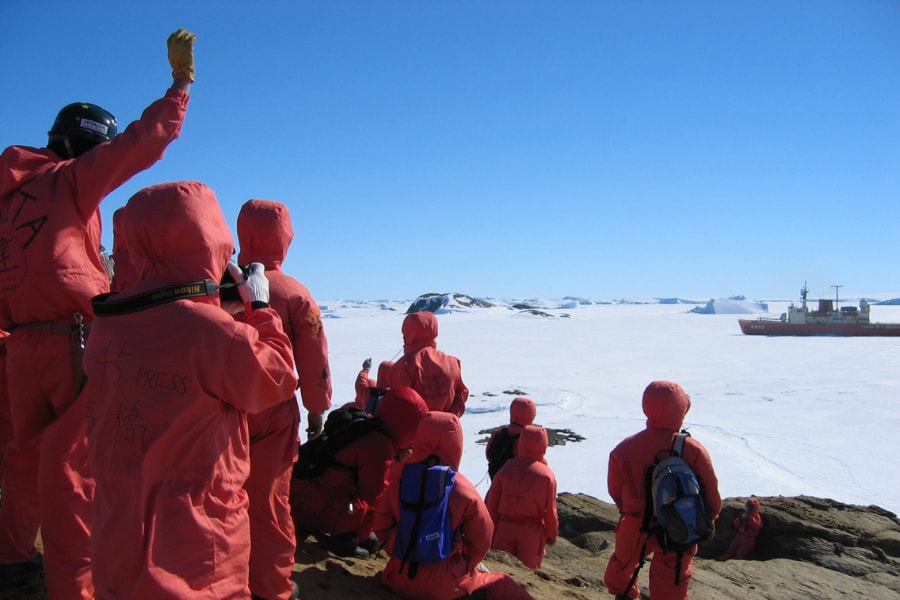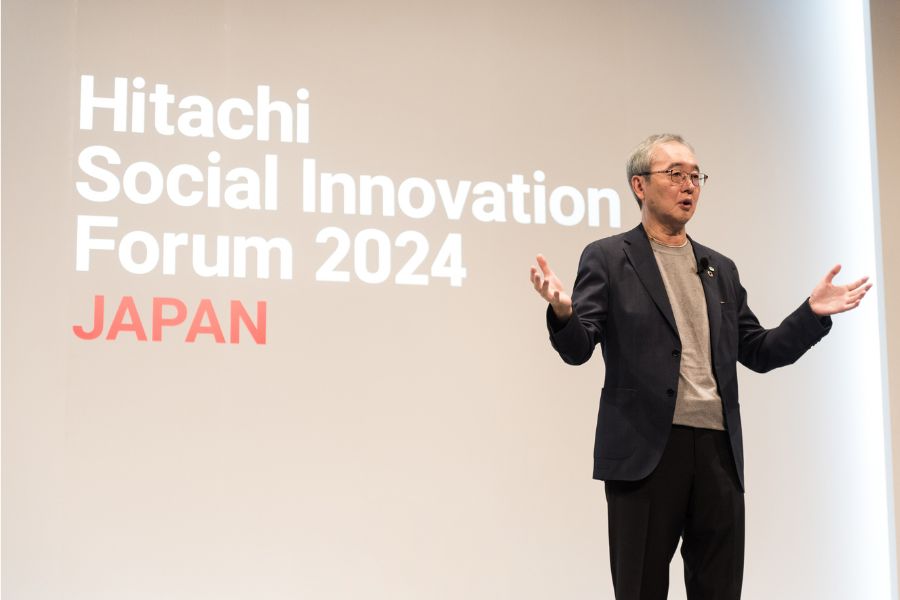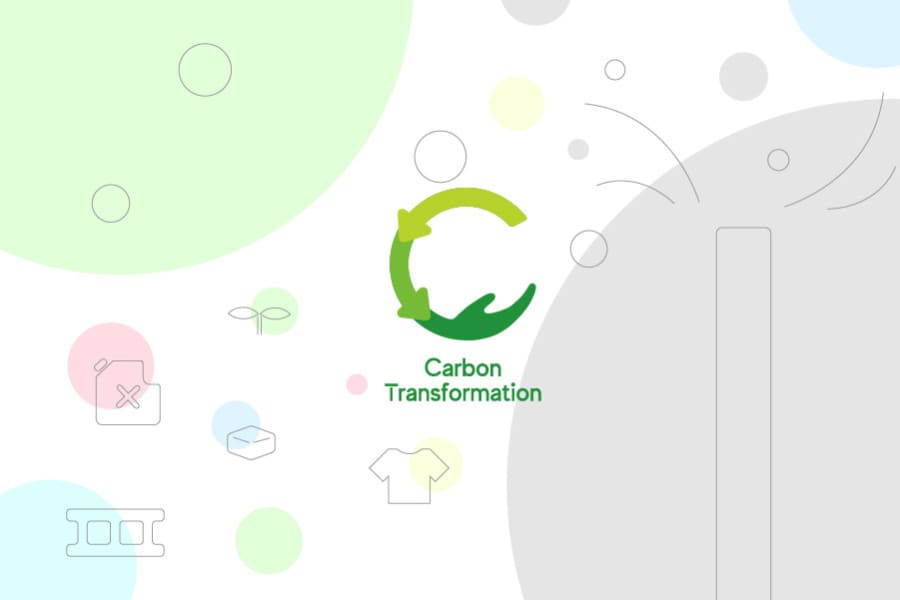Meteorites, Penguins, and Power Outages: Just Another Day in Antarctica
Dec. 11, 2024
Xin Luo and Arisa Murata

Japan has been sending research teams to Antarctica since the 1950s and has built several stations, including Syowa Station, to study weather patterns and unearth secrets buried in the ice, in order to help preserve the global environment. In the previous article, “Hitachi and Antarctica: 60 Years at the End of the Earth,” we looked at why Hitachi employees started joining the expeditions and the history of Hitachi’s support for power generation. This second article describes the various hardships that Hitachi employees have faced, and relates some of the unusual stories from Antarctica.
Buried in the Ice and meteorites
During the long history of Antarctic expeditions, some of our employees spent time at stations that are now closed. Hiroshi Otsuka, now 60, participated in the 31st Japanese Antarctic Research Expedition (1989) and wintered at Asuka Station. Asuka Station was built on the Antarctic ice sheet about 670 km west of Syowa Station and was operated by a small team from 1986 to 1992. Otsuka went to Asuka Station to maintain the generator installed there, but found that, “The heat emitted from the station and the new snowfall were rapidly burying the station in the ice sheet. When we arrived (four years after it was built), we had to dig it out of the snow before we could enter.”

Otsuka says that one of his most memorable experiences while he was at Asuka Station was hunting for meteorites. He would ride around on a snowmobile while searching the surrounding area. As the ice sheet is formed from many years of compacted snowfall there are normally no rocks on it. But rocks falling from the sky are a different matter. Sometimes, strong winds cause the ice to sublimate (change directly from solid ice to water vapor, skipping the liquid state). When this happens, meteorites that fell in the past can emerge from within the ice. If you find rocks on the ice sheet, there is a good chance they are meteorites. Otsuka spent several hours a day out in the extreme cold. He proudly states, “I found many meteorites.” These Antarctic meteorites are helping us to understand the universe.

An unfamiliar environment
In Antarctica, the Hitachi employees often have to go above and beyond their usual work. Already specialists in power generation, in Antarctica they faced the additional challenge of being responsible for installing and maintaining a wide variety of equipment.
Takashi Inoue, now 52, was deployed on the 45th expedition in 2003. In his regular job, he oversaw quality assurance for network-related equipment for power generation facilities. At Syowa Station, he was assigned to assist in the maintenance of the satellite communications infrastructure. This was very different equipment and he had a hard time with the wiring and installation. Nonetheless, he persevered and greatly improved the communications environment at Syowa Station.
Outside of his job specialization, he also got the chance to survey the local wildlife - he was tasked with counting the penguin population and their nests. Inoue remarked, “I enjoy watching penguins at the zoo, but it was a little unnerving being surrounded by hundreds of them. It was a unique experience.”

3 hours and 42 minutes
Maintaining generators in Antarctica is not always smooth sailing. Masao Gunji, now 48, from Hitachi High-Tech Corporation, was a member of the 49th expedition in 2007. He was away from Syowa Station when a power outage occurred. Electricity is vital – both for the research equipment and for survival. An outage is a serious matter.
At the time, the power at Syowa Station had been increased to two 300 kVA generators, one of which was always in operation. The outage occurred three days after Gunji had left the station on a field research. He received an urgent call on his satellite phone. A valve that had been closed to clean the cooling equipment would not open, preventing the flow of cooling water and causing the generator to overheat. As a result, the generator automatically went into emergency shutdown. The team in the station tried to restart it, but for some reason couldn’t get it going. Each attempt used up precious power stored in the back-up batteries. The staff at the station had already tried three times to restart the generator, and they had only enough power for one more attempt.
With the alarm ringing in his ear over the satellite phone, Gunji focused on the report from the team back at the station. Blueprints and wiring diagrams ran through his mind, and he wondered if the other generator, which was not running, might be affecting things. He told the team at the station what to do and hung up. He was concerned, but all he could do was wait and trust the team at the station. Two anxious hours later, he was relieved to hear that the power had been restored safely. The power outage had lasted a record 3 hours and 42 minutes. After a power outage that long, he wondered if the freezing weather had penetrated the station and if the team were safe. When Gunji anxiously returned to the station, he was warmly greeted by those who had been working on restoring the power and was relieved to hear that there had been no major damage.

A new Antarctic record
Hirotake Kubota, now 39, joined the 57th expedition in 2015 and was tasked with investigating short power outages that were occurring frequently at the time. He discovered two main causes: radio-wave interference from people using walkie-talkies nearby (this was quickly put a stop to), and damage to cables caused by the buildup of snow. To prevent this, he and some colleagues mapped the location of the cables around Syowa Station, marking the area and taking photos. After heavy snowfall, they could use the photos to prioritize snow clearing around the electricity cables so they could quickly check and carry out maintenance. Thanks to Kubota’s discoveries and remedies, the number of power outages sharply decreased.

Apart from maintaining key equipment, Kubota holds an unusual record related to Antarctica. During an ecological survey of Antarctic life, he caught a giant fish, an Antarctic toothfish, which was about 157 cm in length (about the same as Kubota’s height). It is the largest fish ever caught by the Japanese Antarctic Research Expedition and was given to the Tokyo Sea Life Park as a specimen.

On to the next generation
As we have seen, unexpected things can happen in Antarctica. However, each experience contributes to our understanding of the natural world. For 60 years, Hitachi has been an Antarctic research partner of the National Institute of Polar Research, and has supported its activities through the supply of vital power. The current generators are fairly new, but the control panels that send the electricity around the facility have been in place for around 30 years. Shino Tabata, 31, is the latest Hitachi employee to be loaned to the National Institute of Polar Research and a member of the 65th expedition (2023). She is busy maintaining the generators and control panels, and monitoring the power consumption of the entire station.
“It’s amazing that these 30-year-old control panels still support the research team. I am determined to ensure this expedition enjoys a stable and incident-free supply of electricity, and to hand it over to the next generation,” she says proudly.

The names of the Hitachi employees who have served at Syowa Station are listed on this Hitachi flag. Tabata is standing on the left (photo courtesy of the National Institute of Polar Research and taken by JARE 64 member Ami Shirano).



